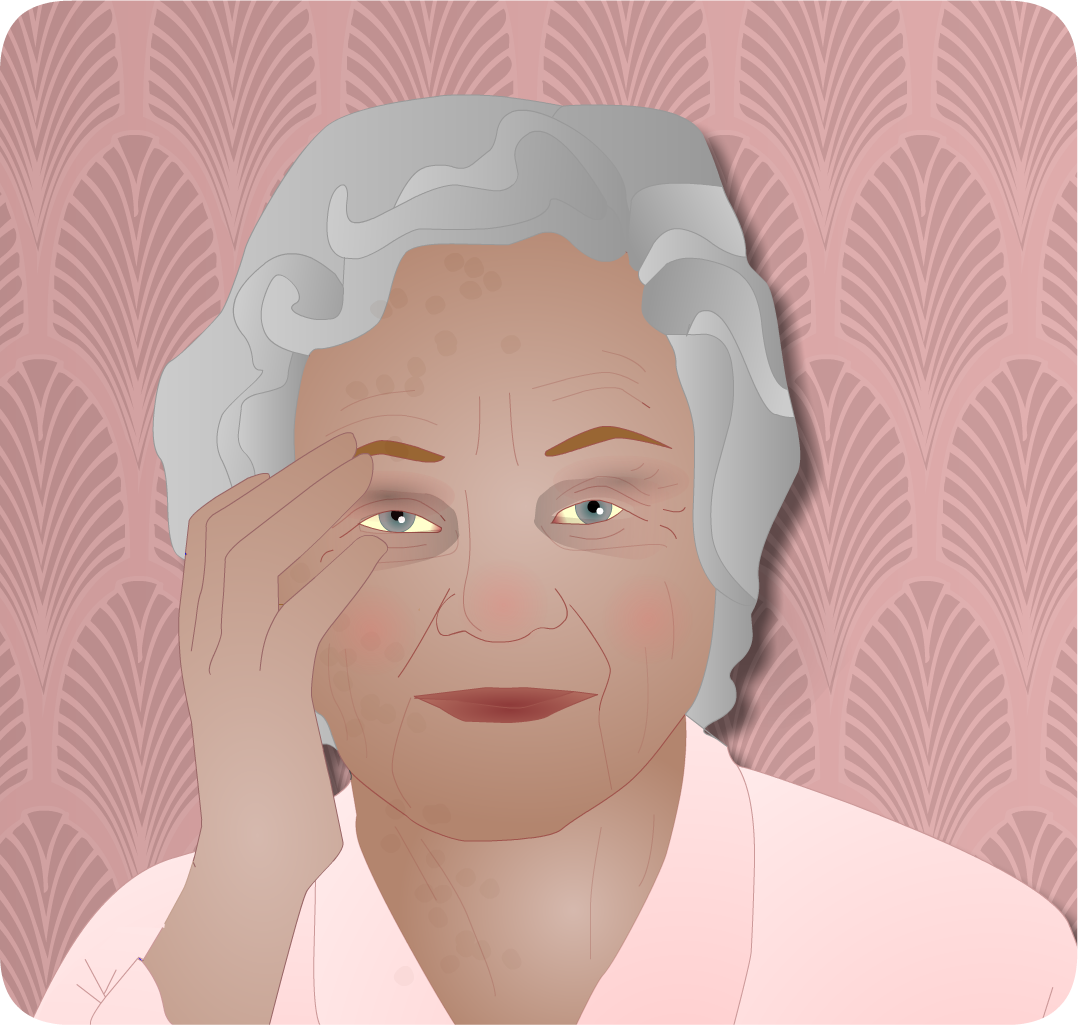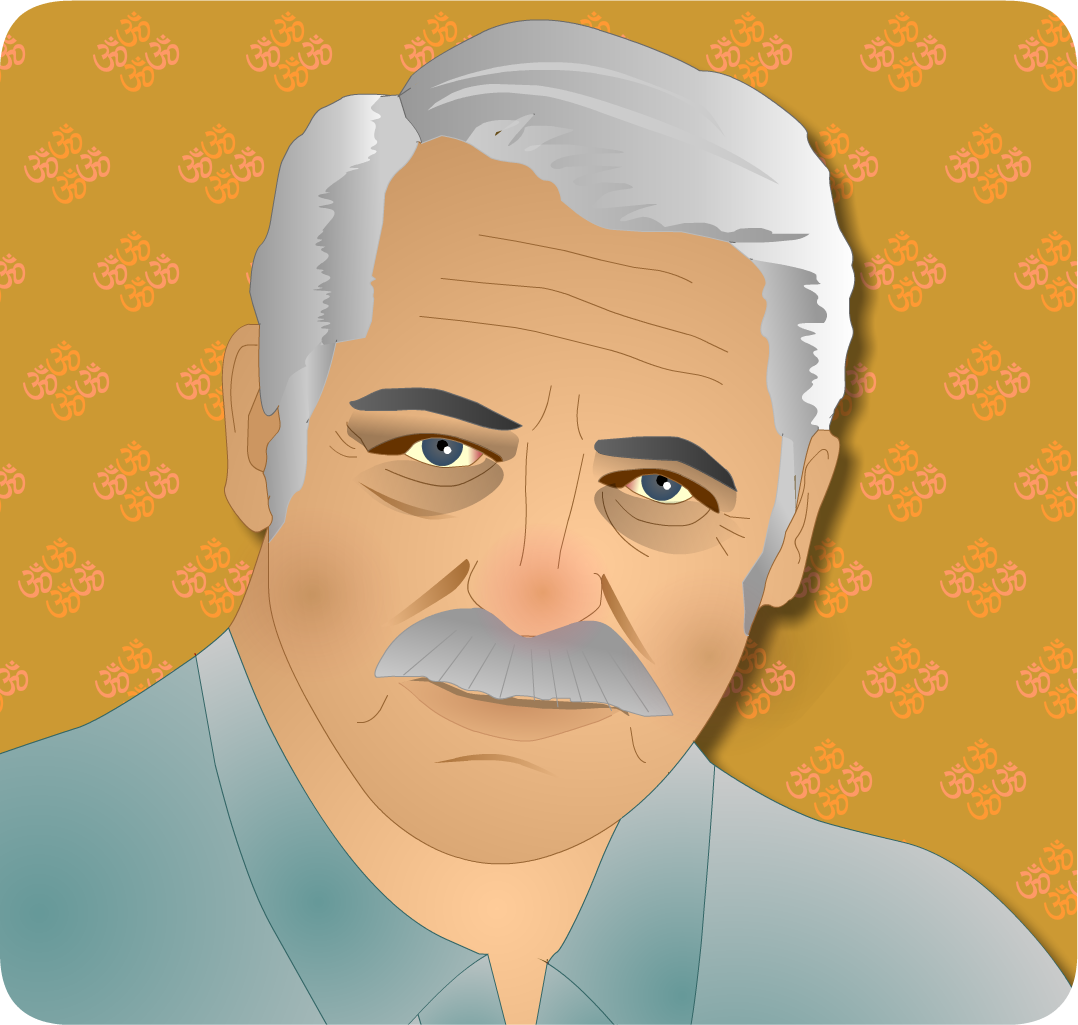Nurse Moffat thinks Angela needs a medical assessment and calls Dr Bryce. Concerned that Angela may have had a serious complication of her stroke he arranges another brain scan which shows no change from her first scan.
Dr Bryce considers all the possible causes of Angela’s headache, reviews her investigation results and decides that the headache is due to her stroke with no other underlying cause.
See the topic loop below for further information on headache after stroke.
Topic Loop:
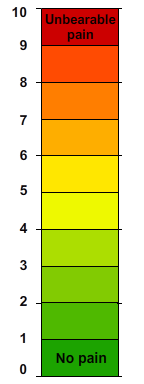
Angela tells Nurse Moffat that her headache is on the right side of her head, that it started when she had her stroke but is worse now. Nurse Moffat also notices that Angela seems quite drowsy.
Nurse Moffat decides to assess Angela’s pain using a pain assessment scale. The unit uses either a vertical Visual Analogue Scale (VAS) or a Faces Pain Scale depending on the patient’s impairments. There isn’t an ideal scale for stroke patients but these can be used with patients who have stroke-related visual and communication impairments.
An example of a Faces pain Scale: www.wongbakerfaces.org
See right for an example of a Visual Analogue Scale:
For further information on pain assessment scales after stroke:
Nurse Moffat comes to see what’s wrong as she notices that Angela is holding her head in her hand and is grimacing with pain.
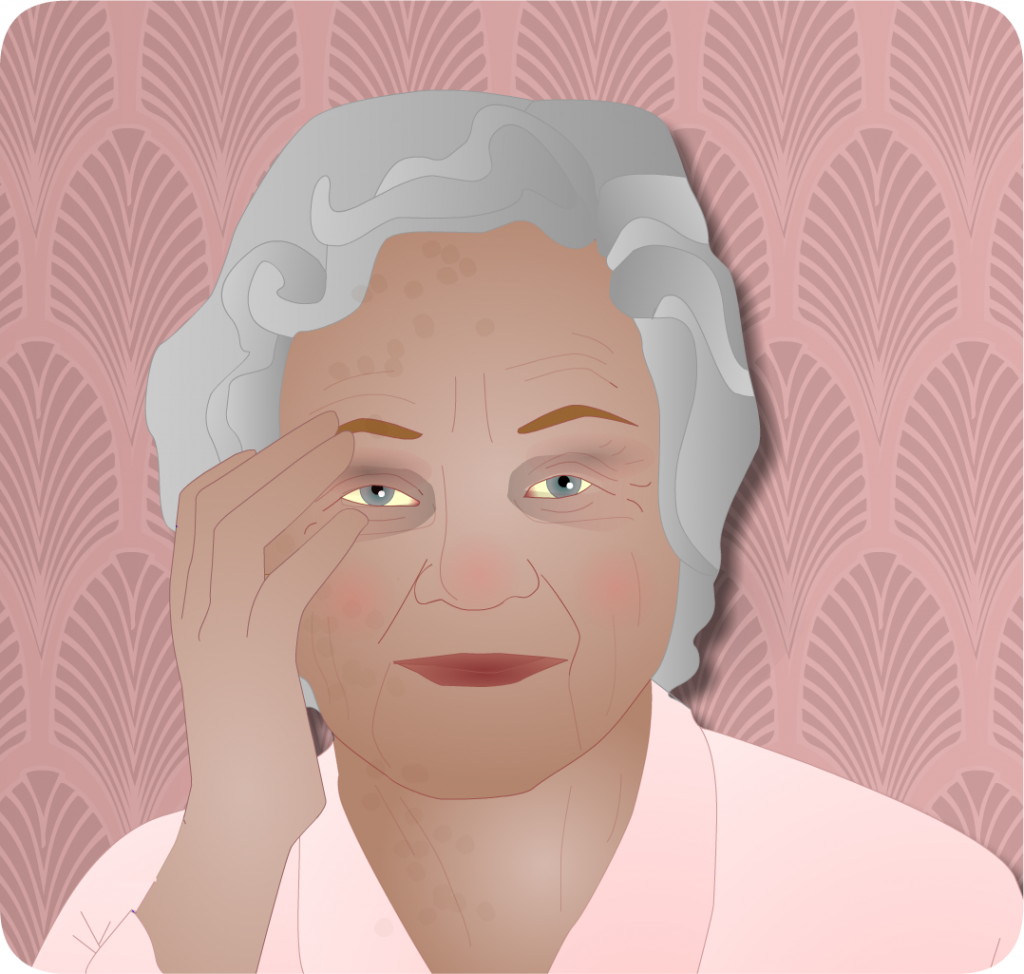
 Angela is 82 years old and was admitted to the acute stroke unit 2 days ago with a haemorrhagic stroke which has caused left-sided weakness. Until today she has been settled and engaging well with staff. However, today she says she has a headache.
Angela is 82 years old and was admitted to the acute stroke unit 2 days ago with a haemorrhagic stroke which has caused left-sided weakness. Until today she has been settled and engaging well with staff. However, today she says she has a headache.
Early recognition, assessment and management of pain is essential for successful stroke rehabilitation.
Following stroke, patients may complain about having pain which may have been present before the stroke or brought on as a consequence of the stroke such as:
- Headache
- Hemiplegic shoulder pain
- Central post stroke pain
- Painful joints e.g. hip and knee
- Back pain
The two patient scenarios will cover headache and central post-stroke pain (CPSP). Hemiplegic shoulder pain can be found in the STARs Advancing Module 9: Management of physical complications following stroke.
Pain is a common symptom after a stroke. It may be due to the effects of the stroke or to pre-existing conditions. ‘Headache, hemiplegic shoulder pain and neuropathic pain including central post-stroke pain are among the major types of pain described and all can occur within the first month following stroke as well as in the longer term.’ (Pain following acute stroke Best Practice Statement (2011), RCP National clinical Guidelines for stroke 2016 pdf))
Learning points
On completion of this module you will:
- Understand the importance of early recognition and appropriate treatment of pain after stroke
- Be able to recognise types of pain specific to stroke
- Be aware of appropriate pain assessment tools
- Have knowledge and understanding of the management of post-stroke pain including possible medication and the roles of the members of the multidisciplinary team

Module authors
Module Lead:
Lynsey McAlpine, Clinical Specialist Physiotherapist in Stroke Rehabilitation
Module Group:
Stuart McCormick, Registered General Nurse with special interest in pain management
Katrina McCormick, Clinical eLearning Project Manager, Chest Heart & Stroke Scotland
Serena Battistoni, eLearning Interactive Content Developer, Chest Heart & Stroke Scotland
Reviewers:
Alison Cassells, Stroke Clinical Nurse Specialist, NHS Fife
Dr. Amy Mulroue, Clinical Psychologist, Clinical Neuropsychology/Stroke, NHS Lothian
Dr. Richard O’Brien, Consultant Physician, Stroke Medicine & Medicine of the Elderly, NHS Lothian
This module was originally developed by:
Module lead: Gill Alexander, AHP Stroke Consultant, NHS Greater Glasgow and Clyde
Group members: Janette Barrie, Nurse Consultant in Long Term Conditions, NHS Lanarkshire
Laura Hastings, Lead Advice Line Nurse, Chest Heart & Stroke Scotland
Dr Christine McAlpine, Clinical Director, NHS Greater Glasgow and Clyde
Dr Alison McGregor, Clinical Psychologist, NHS Greater Glasgow and Clyde
Lynn Robertson, Lead Physiotherapist for Stroke Rehabilitation, NHS Dumfries and Galloway
Critical readers: Christine Cartner, Stroke Liaison Sister, NHS Dumfries & Galloway
Eileen Cowie, Research Assistant, University of Glasgow
Prof Martin Dennis, Professor of Stroke Medicine, University of Edinburgh
Thérèse Jackson, Consultant Occupational Therapist in Stroke, NHS Grampian
Mark Smith, Consultant Physiotherapist, NHS Lothian
Introduction
On completion of this module you should have a critical understanding of central post stroke pain and headache following stroke.
The answers to all the test questions are contained within the module. This information may be provided in the ‘Additional Information’ boxes and topic loops on some of the pages.
Topic Loops
Recurring topics in this subject are listed below as topic loops. These are short tutorials explaining key concepts. When working through the cases links to these topic loops will appear underneath the main content of the page.
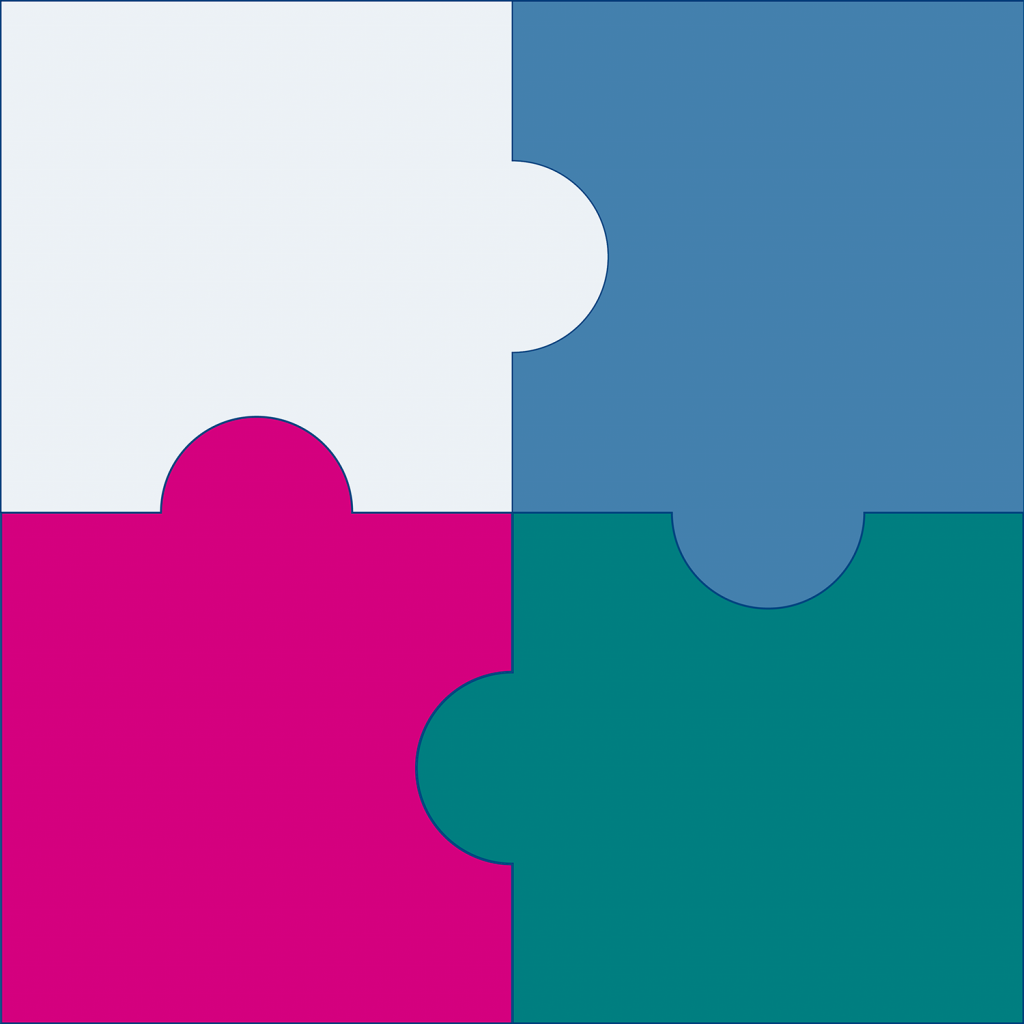
By completing the module you will now have a critical understanding of:
- The frequency of venous thromboembolism (VTE) in stroke patients
- The factors which increase patients risks of VTE after stroke
- Interventions which may be helpful in reducing the risks of VTE
- A detailed knowledge of how to use Intermittent Pneumatic compression


